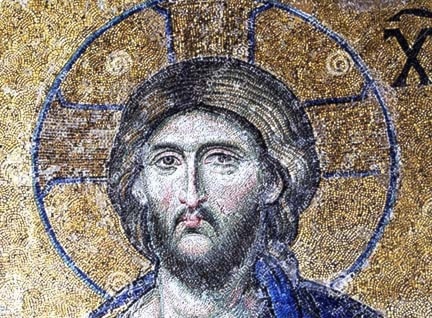Rev. Yme Woensdregt
Last week, I wrote that it matters what kind of image we have of God. How we see God determines much of how we live out the faith we claim. I think this is true regardless of which faith you follow, or even if you follow no faith. Even if you have no faith, you will still think about “ultimate reality” which is what Christians call “God”. Our vision of the divine, of ultimate reality, determines how we live.
For Christians, the same thing is true about the image we have of Jesus.
Some people think of Jesus as a benign figure, sweet and gentle, meek and mild, who pats children on the head. In 1742, Charles Wesley (one of the founders of Methodism) wrote a children’s hymn which began, “Gentle Jesus, meek and mild, Look upon a little child; Pity my simplicity, Suffer me to come to Thee.” Many people have not moved beyond that image.
Others see Jesus as a social critic, or even as a violent revolutionary. They believe Jesus came to upset the apple cart. Followers of Jesus, therefore, are called to the same kind of ministry of challenging the status quo.
Then there are others who find it difficult to think of Jesus as human at all. I am reminded of Martin Luther’s Christmas carol, “Away in a manger” in which the second verse sings “The cattle are lowing, the baby awakes, But little Lord Jesus no crying he makes.” I’ve never yet met a newborn who doesn’t cry!
For these people, Jesus was God on earth, a divine being only thinly disguised as a human being. He was all–seeing, all–knowing, and all–powerful; he was flawless, sinless, and sexless. He could perform miracles and read people’s minds. He was Superman without having to endure the bother of being Clark Kent.
The problem with that particular image of Jesus is that he becomes someone we can adore and worship, but we could never imitate him. We can believe in him, but following him is beyond our capacity because we are, after all, human, not divine.
At the other end of that particular spectrum is the view that Jesus was just a good man, a wise philosopher, or an outstanding moral educator. He has been described as a religious genius or an expert psychologist. Those pictures focused on his humanity, but they deny the incredible spiritual nature he embodied.
So who was Jesus?
The traditional picture many have of Jesus probably comes from the creeds. Many Christians around the world recite either the Apostles’ Creed or the Nicene Creed regularly in their worship. Both of these creeds were developed about some 300 years after the death and resurrection of Jesus.
The Nicene Creed was written at the Council of Nicea in 325. It was part of an attempt by the emperor Constantine to bring unity to a fractured church. It is less clear when the Apostles’ Creed was written. Originally developed in the second century, the earliest historical evidence for this creed is found in a letter from the Council in Milan in 390.
The purpose of both of these creeds was to articulate clearly a brief statement of the essentials of the Christian faith. Marcus Borg summarizes the popular image of Jesus found in the creeds as follows:
Jesus was the divinely begotten Son of God, the risen Christ, truly God and truly human;
His message consisted primarily of inviting his hearers to believe that what he said about himself and his role in salvation was true.
He was sent into the world to die on a cross as a means of reconciliation between God and humankind. “Jesus died for your sins” is his purpose in a nutshell.
If you are familiar with these two Creeds, you will notice that neither of them says anything at all about Jesus’ earthly life other than that he was born and that he died. The last 200 years have seen a growing interest in who Jesus was, how he lived, and the context in which he lived. Scholars have engaged in a “Quest for the Historical Jesus”. It was an attempt to uncover an historical portrait of Jesus, which sought to differentiate between what is called “the Jesus of history” and “the Christ of faith”.
This quest involves a new set of answers to three primary questions: Who was Jesus? What did he hope to accomplish? What did he proclaim?
Those engaged in this quest attempt to rediscover the life and teachings of Jesus in a fresh way, seeking to understand how Jesus confronted the social issues, politics, economics and religion of his day.
In the next couple of weeks, I’ll sketch out the portrait of Jesus that is emerging from scholars who have undertaken this task. It will give us more insight into the human figure who stands behind a tradition that has lasted now for some 2,000 years.
Yme Woensdregt is Pastor at Christ Church Anglican in Cranbrook
